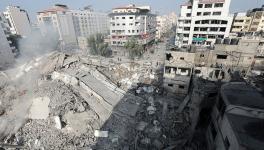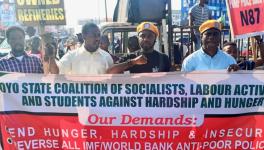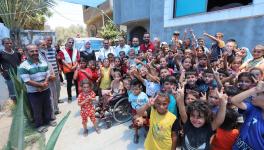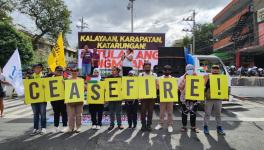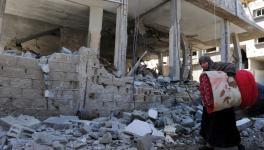Why Must We Talk About Yemen’s Humanitarian Crisis?
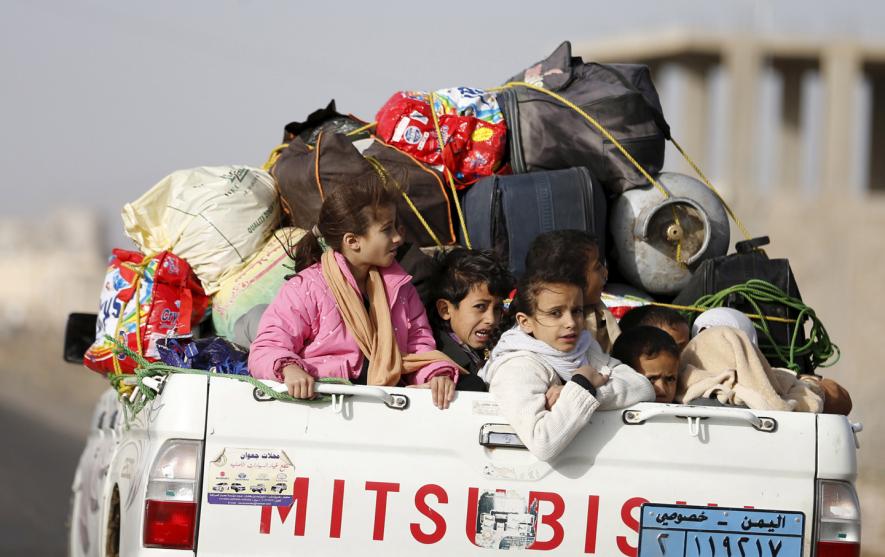
Image Courtesy: Reuters / Khaled Abdullah
Yemen is witnessing the world’s biggest humanitarian crisis. Twenty-four million people, both citizens as well as refugees, need immediate assistance. Widespread famine has thousands in its grips. Another 50 lakh are on the edge of survival and perishing. With the COVID-19 pandemic also in full swing, conditions could not be direr in the country. Yet, is the world outside Yemen engaged with the crisis and the distress it is causing?
Twitter—a virtual public space—provides some clues into how much space any issue occupies in the public discourse. Twitter metrics can tell us something about how private individuals and organisations are using the microblogging platform to drive narratives around refugees and Internally Displaced Persons in Yemen.
Data suggests that those who are far from the crisis are slowly talking less about it. Take for instance the United Nations and its agencies, which are amongst the few organisations on the ground (and with the means) to care for the conflict-affected. The UN popularised the hashtag #YemenCantWait to draw attention towards the conflict and get people engaged in digital calls for peace. Between June 2014 and March 2021, this hashtag garnered 1.21 lakh tweets, 5.53 lakh retweets, and 8.62 lakh likes.
Further, ever since the crisis began in 2014, over 34,000 unique users have participated in conversations specifically about the affected people in Yemen. This includes conversations about internally displaced Yemeni civilians and refugees from Somalia, Ethiopia, etc. Altogether, these 34,000 users have generated around 79,000 tweets that have got 3.05 lakh retweets and 4.45 lakh likes.
To go deeper, of these 34,000 unique users, 14 dedicated Twitter handles were tweeting right through the years of crisis. They generated 2.5% of all tweets on the issue. Notably, @Refugees and @UNHCRYemen together accounted for 15% of all retweets. Therefore, such handles are instrumental in driving conversations around Yemen’s humanitarian crisis.
To give a bird’s eye view of the responses to Yemen’s humanitarian crisis on Twitter: Between 2019 and 2021, around 152 Twitter handles have continuously engaged in conversations about this crisis. Between 2020 and 2021, around 343 handles have constantly engaged with the subject. And, in the last eight years of this crisis, 20 handles tweeted over 100 times each on the issue.
The crisis in Yemen garnered mass attention in 2015 after clashes erupted between the Yemeni government and the Houthi people. By the end of that year, over 2.5 million people were displaced due to the conflict. At the time, Twitterati had responded with compassion. About 8,000 people generated around 16,000 tweets that gathered 44,000 retweets and 21,000 likes.
The crisis remained at the centre of discussion and only grew stronger until 2017. Though the number of displaced people had dropped slightly by 2017, the number of users involved in discussing the crisis grew on Twitter by over a thousand. In 2017, the crisis generated about 18,000 tweets which were retweeted over 67,000 times and liked around 68,000 times. Then, unfortunately, something changed.
Comparison of unique users, tweets, and conflict displacements in Yemen.
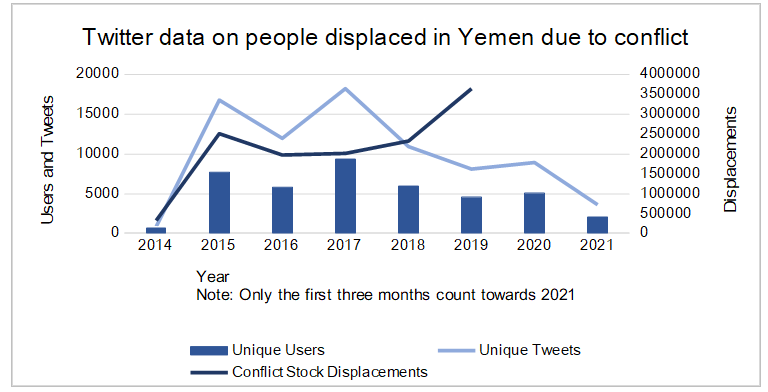
Starting 2017 and for the next three years, Twitterati’s interest in those who have been displaced in Yemen started to decline. Both the number of users involved in conversations about Yemen and the tweets they generate on the topic have come down. This is despite the number of displaced going much higher than before. Note that the data (see above graph) on displacement only corresponds to the internally displaced and does not account for refugees in Yemen. If it did, it would push the number of people in need of humanitarian aid even higher.
On average, between 2015–17, each user sent over two tweets on this crisis. The number of tweets per person dropped to 1.77 in 2020. Put another way, in 2017, for every 214 displaced persons in Yemen, there was one Twitter user. In 2019, this dropped to one user for every 797 displaced person, a roughly three-fold fall.
The figures do not invite complete pessimism, though. In just the first quarter of 2021, participation is already close to half the levels of 2020. User interest has steadily climbed in the last three months.
However, compared with other topics, Twitter users who specifically discuss the Yemen crisis are low. Many topics on Twitter, say, football, receive in just about a month as many tweets as Yemen’s crisis has so far. This is not to say that the entire conflict is ignored. For instance, over 14,000 users have generated 23,000 tweets that mention the “conflict” in “Yemen” between March 2020 and March 2021.
As we have argued before, social media is a site for concerted mobilisation practices on a range of issues. While the crisis in Yemen is certainly being discussed, it deserves much more attention than it is getting. It is important to remember that refugees are defined and protected by international law, specifically the 1951 Refugee Convention. Internally displaced persons are defined and protected by the 1998 Guiding Principles.
The task at hand is to talk about the refugees and IDPs who need humanitarian assistance in Yemen. Talking does make a difference. It helps acknowledge the efforts of those working in the field, builds awareness and engagement, and puts pressure on the international community to resolve the conflict.
Importantly, conversations about the crisis give hope to the displaced, who have lost their homes, loved ones, some even the will to live. For them, to see empathy and voices raised against ignoring the crisis, are a sign they have not been forgotten.
Note: Twitter data was compiled by the authors by searching for tweets that contain a combination of ‘Yemen’ and ‘Refugee(s)’, ‘IDP(s)’, ‘internally displaced’, ‘displaced family (-ies)’, ‘displaced man (men)’, ‘displaced woman (women)’, and ‘displaced child (-ren)’. A single tweet may refer to multiple keywords and hence a filter was run to only retain unique tweets by their unique IDs. Note that this data is indicative. Absolute numbers may differ slightly given spelling errors in users’ tweets, which the dataset does not account for. Additionally, the data on numbers of tweets and their reach have been rounded off to the nearest thousand.
Vihang Jumle is a data analyst in New Delhi. Vignesh Karthik KR is a doctoral researcher at King’s India Institute, King’s College London. The views are personal.
Get the latest reports & analysis with people's perspective on Protests, movements & deep analytical videos, discussions of the current affairs in your Telegram app. Subscribe to NewsClick's Telegram channel & get Real-Time updates on stories, as they get published on our website.










